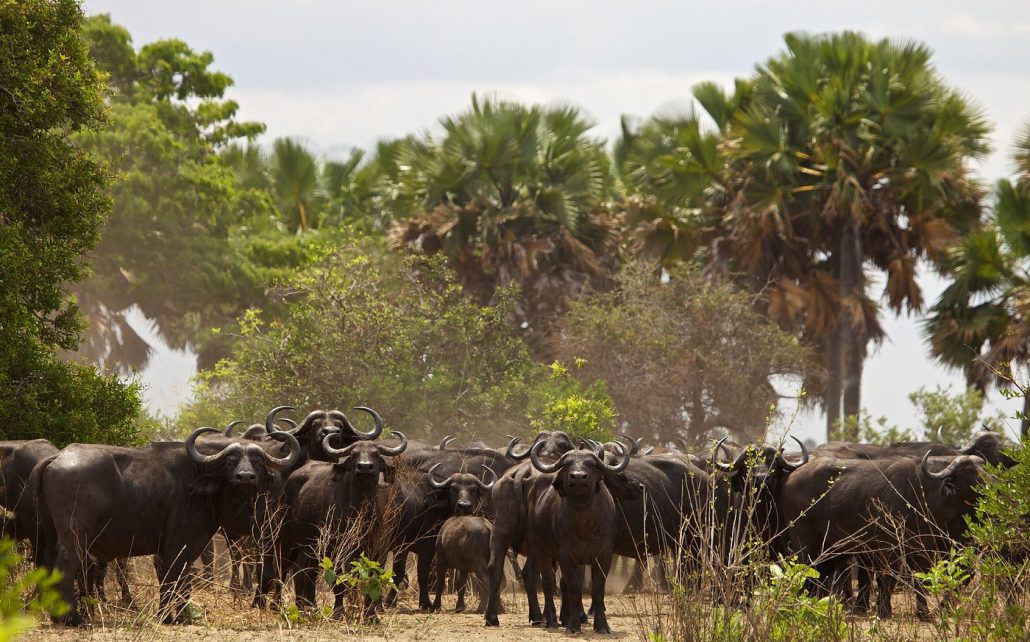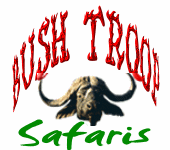Katavi National Park
Katavi National Park is one of Tanzania’s most remote and least visited parks, making it a hidden gem for wildlife enthusiasts seeking solitude and raw, untouched wilderness. Located in the southwestern part of the country, Katavi covers an expansive area of about 4,471 square kilometers, making it the third-largest national park in Tanzania. Despite its size, Katavi remains largely uncommercialized, offering an authentic safari experience far removed from the busier northern circuit parks like Serengeti or Ngorongoro.

Established in 1974, the park is named after Katavi, a legendary hunter believed to have spiritual significance for local tribes. The park’s isolation means that visitors often have large areas to themselves, contributing to the sense of being in an undiscovered part of Africa. The vast floodplains, miombo woodlands, and seasonal rivers provide a diverse range of habitats, making Katavi an exceptional destination for wildlife viewing and birdwatching.
Vegetation
The vegetation in Katavi National Park is diverse, ranging from seasonally flooded grasslands to dense miombo woodlands. During the wet season, the park’s floodplains, such as the Katavi and Chada Plains, transform into lush green landscapes filled with grasses and sedges. These plains dry up in the dry season, becoming dusty expanses where animals congregate around the remaining water sources. The miombo woodlands, dominated by brachystegia and acacia trees, cover much of the park’s higher ground and provide shelter for wildlife during the hotter parts of the day. Riverine forests are also present along the Katuma River and other watercourses, supporting a different set of plant and animal species. The contrast between the wetlands and woodlands creates a dynamic environment that supports a wide variety of wildlife and plant life.
Scenery
Katavi National Park offers some of the most dramatic and varied landscapes in Tanzania. The vast floodplains of Katavi and Chada, lined with distant mountains, provide an expansive and almost surreal backdrop for wildlife viewing. These floodplains are dotted with seasonal rivers, marshes, and waterholes that attract large herds of animals during the dry season. The Katuma River, which snakes through the park, is a lifeline for many species, and its riverbanks often teem with hippos, crocodiles, and other animals seeking water. Beyond the plains, the park is framed by the rolling hills and miombo woodlands, creating a contrast between the open savannah and more densely forested areas. The park’s isolation adds to the scenery’s untouched beauty, offering breathtaking views with few signs of human interference.
Wildlife in Katavi National Park Tanzania
Katavi National Park is renowned for its remarkable concentrations of wildlife, especially during the dry season when the park’s floodplains shrink and water becomes scarce. Thousands of buffaloes can be seen gathering in large herds, alongside zebras, giraffes, and antelopes such as elands, impalas, and topis. The park is also known for its massive hippo pods, which can number over 200 individuals crowded into shrinking waterholes during the dry months. Crocodiles are commonly seen basking on riverbanks or hiding in caves along the Katuma River. Predators such as lions and spotted hyenas thrive here, with lion prides frequently hunting the large herbivore populations. Leopards, although elusive, can also be spotted in the denser woodland areas. The sheer density of wildlife, particularly during the dry season, makes Katavi one of Tanzania’s best-kept secrets for exceptional game viewing.
Birding
Katavi National Park is a haven for birdwatchers, with over 400 bird species recorded. The park’s diverse ecosystems, including wetlands, miombo woodlands, and grasslands, attract a variety of both resident and migratory birds. During the wet season, the floodplains come alive with water birds such as storks, spoonbills, pelicans, and herons. The park is also home to a range of raptors, including bateleur eagles, fish eagles, and martial eagles. Colorful species like the lilac-breasted roller, paradise flycatcher, and yellow-collared lovebird can be found in the woodlands. Migratory species, including European swallows and bee-eaters, also make an appearance during the rainy season, enhancing the birding experience. Katavi’s rich birdlife, combined with its peaceful and unspoiled environment, offers a rewarding experience for avid birders.
Weather and Climate
Katavi National Park has a tropical climate with distinct wet and dry seasons. The wet season runs from November to April, during which the park receives significant rainfall, transforming the floodplains into lush wetlands. During this time, the park’s scenery is vibrant, and birdlife is abundant. However, some areas may become inaccessible due to flooding. The dry season, which lasts from May to October, sees temperatures rising and the park drying out. The floodplains shrink, and animals concentrate around the few remaining waterholes, making wildlife viewing spectacular. Temperatures during the dry season can range from 25°C to 35°C (77°F to 95°F), with cooler nights. The dry season is ideal for game viewing, while the wet season is best for those interested in birding and lush landscapes.
Best Time to Visit Katavi National Park
The best time to visit Katavi National Park depends on what visitors hope to experience. For wildlife viewing, the dry season from June to October is the best period. During this time, animals congregate around the remaining water sources, making them easier to spot. The park’s large herds of buffalo and concentrations of hippos and crocodiles are most visible during this season. The wet season, from November to April, is ideal for birdwatchers, as migratory species arrive, and the park’s vegetation is at its most vibrant. However, heavy rains can make some areas difficult to access, and wildlife disperses across the park as water becomes more plentiful. Both seasons offer unique experiences, but the dry season is generally more favorable for game viewing.
Activities and Main Attractions in Katavi National Park
Katavi National Park offers a range of activities that cater to safari enthusiasts and adventurers looking for a remote and immersive experience. Game drives are the most popular way to explore the park, with guides leading visitors through the diverse landscapes in search of wildlife. The dry season, in particular, offers incredible game viewing as animals congregate around dwindling water sources. Walking safaris are another highlight, allowing visitors to explore the wilderness on foot with experienced rangers. These walks provide a closer look at the flora and fauna of the park, as well as a chance to track animals like elephants and buffaloes. Fly camping is a unique experience in Katavi, where visitors can sleep under the stars in the heart of the bush, surrounded by the sounds of nature. The park’s remote location also makes it ideal for those looking for solitude and an intimate connection with nature.
Park Rules
To protect the delicate ecosystems and wildlife of Katavi National Park, visitors must adhere to a set of rules during their stay. These include staying on designated roads and tracks during game drives to minimize environmental damage and not disturbing the animals. Visitors are required to keep a safe distance from wildlife, particularly large animals like elephants and buffaloes, to ensure both visitor and animal safety. Littering is strictly prohibited, and all waste must be disposed of responsibly to maintain the park’s pristine condition. Feeding or interacting with animals is not allowed, as this can alter their natural behavior and pose risks to both humans and wildlife. Camping is permitted only in designated areas, and fires should be lit only in specified fire pits. Respecting these rules helps to preserve Katavi’s natural beauty and ensures the park remains a sanctuary for future generations.
